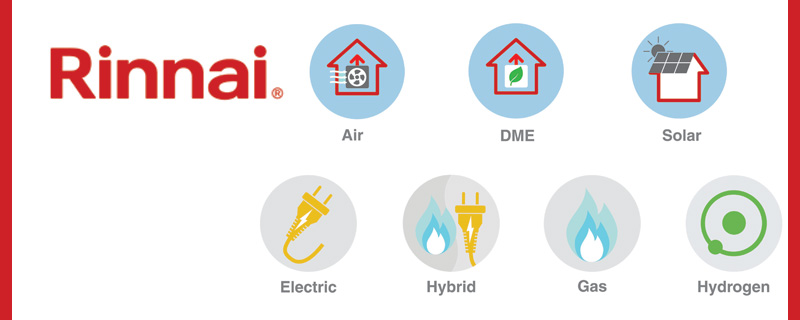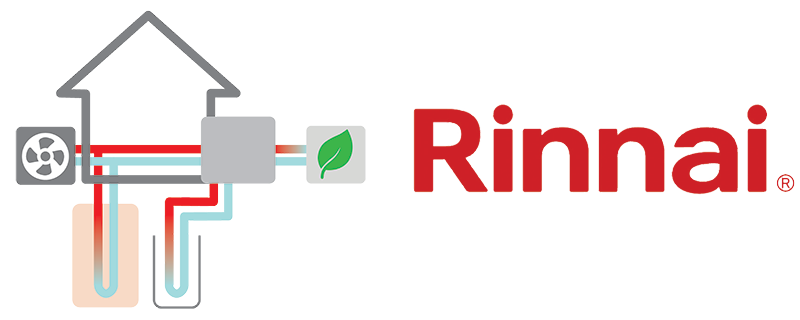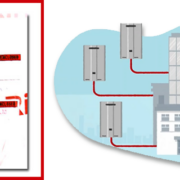HOW TO DECARBONISE THE GRID?
POLICY EXCHANGE REPORT HIGHLIGHTS SEPARATE, DIFFERENT APPROACHES

Chris Goggin of Rinnai reviews a recent report that details three separate routes to the decarbonisation of the UK national energy grid. The report highlights a present government plan and an opposition strategy – does either methodology ensure beneficial results which delivers NetZero?
The recently released report “Decarbonising the Grid Three Scenarios for Achieving Net Zero Power” presents three pathways that explore different routes towards providing clean and cheap energy to the 60 million-plus UK population. An independent energy market analytics company – Aurora Energy Research – was commissioned to review each pathway. The reviewers have provided their interpretation of feasibility of the proposals.
The three scenarios are:
Net Zero 2030 plans under the opposition
Net Zero 2035 guided by the current government.
“Business-As-Usual” model, which follows the current trajectory of policy development and market conditions.
This article will ignore the “Business-as-Usual” model as this would also fall under current government plans. These paths focus on Net Zero status being achieved in 2030 and 2035 and what action must be undertaken to realize this ambition.
The report was commissioned by Policy Exchange, a research institute that aims to influence domestic and international policy by highlighting ideas and attitudes associated with each political party. Funding comes from donations and supporters.
Our industry needs to be mindful of the details here – societal goals are driven by the need for NetZero and a sustainable energy future. Politicians set policy, the industry is at the metaphoric coal face here, in delivering a healthy future of heating, hot water provision and clean air,
The main argument of this report states that the British energy grid is better placed to decarbonise in the year 2035 using the current Government’s plan rather than 2030 under the opposition’s strategy. However, there are objectives that both parties agree upon in principle, such as the expansion of capacity in renewables.
Both parties will seek to enhance production and distribution of onshore and offshore wind, solar as well as hydrogen. Additional funding will be directed towards CCUS (Carbon Capture Underground Storage) whilst nuclear energy manufacturing and deployment will also be scaled up.
Differences in approach is evident in the separate timeframes each party believe can deliver feasible and tangible results. The opposition plan is to decarbonise the grid by 2030 whilst the current government say that 2035 would be more appropriate.
The report summarises the 2030 approach as follows:
“Aurora’s modelling shows that NZ 2030 is deemed an infeasible scenario, justified by an insufficient time available to conduct what would be a radical overhaul of the power system, policy, planning systems and investment landscape. The speed required to build critical technologies – including offshore wind, onshore wind and solar – would need to increase to multiple times their historical installation speed, as would investment in grid capacity.”
The current political opposition will require huge amounts of capital investment to achieve their aim of decarbonising. Aurora has calculated that £15.6 billion a year until 2030 is required (total £93.5 billion) and a further £4.4. billion a year from 2031 – 2035 (£22.5 billion) equating to a total of £116 billion over the next 11 years.
The Aurora reviews state that the definitive feasibility of the 2035 approach: “Reaching the Government’s current target of a Net Zero power system by 2035, though more feasible than a NZ 2030 scenario, will still however require an extensive systems level change and significant policy intervention.”
Current government plans to decarbonise the UK’s power grid by 2035 will require £8.2 billion a year of additional investment until 2030 – a total of £49.3 billon. A further £11.1 billion a year of additional investment from 2031 – 2035 a total of £55.3 billion. The total accumulative investment over 11 years will amount to £104.6 billion over next 11 years.
The 2035 approach is regarded by Aurora as more achievable due to the rate of introduction required in new and updated technology and policy amendments. The investment landscape is also considered more viable within this timeframe.
Both the current government and opposition party are dedicated to decarbonising the energy grid; however, they are yet to agree on an appropriate pathway that secures beneficial economic and societal benefits. The opposition believe decarbonising the UK energy grid by 2030 can be achieved through capacitating £116 billion of investment, whilst the current government’s plan is to extend the 2030 timeline to 2035 and absorb £104 billion of additional subsidy. Time and finance are central issues to both strategies.
Rinnai take an active role in reporting and consulting on potential policy shifts in energy related issues that mainstream UK political parties adopt. Rinnai aim to supply UK customers with a balanced reflection on all matters that affect UK energy options, cost and access.
To stay up to date with policy news and
views subscribe to our newsletter
RINNAI OFFERS CLEAR PATHWAYS TO LOWER CARBON AND DECARBONISATION
PLUS CUSTOMER COST REDUCTIONS FOR COMMERCIAL, DOMESTIC
AND OFF-GRID HEATING & HOT WATER DELIVERY
CLICK HERE FOR MORE INFORMATION ABOUT H3
- Rinnai’s range of decarbonising products – H1/H2/H3 – consists of hot water heating units in gas/BioLPG/DME, hydrogen ready units, electric instantaneous hot water heaters, electric storage cylinders and buffer vessels, a comprehensive range of heat pumps, solar, hydrogen-ready or natural gas in any configuration of hybrid formats for either residential or commercial applications. Rinnai’s H1/2/3 range of products and systems offer contractors, consultants and end users a range of efficient, robust and affordable low carbon/decarbonising appliances which create practical, economic and technically feasible solutions.
- Rinnai is a world leading manufacturer of hot water heaters and produces over two million units a year, operating on each of the five continents. The brand has gained an established reputation for producing products that offer high performance, cost efficiency and extended working lives.
- Rinnai products are UKCA certified, A-rated water efficiency, accessed through multiple fuel options and are available for purchase 24/7, 365 days a year. Any unit can be delivered to any UK site within 24 hours.
- Rinnai offer carbon and cost comparison services that will calculate financial and carbon savings made when investing in a Rinnai system. Rinnai also provide a system design service that will suggest an appropriate system for the property in question.
- Rinnai offer comprehensive training courses and technical support in all aspects of the water heating industry including detailed CPD’s.
- The Rinnai range covers all forms of fuels and appliances currently available – electric, gas, hydrogen, BioLPG, DME solar thermal, low GWP heat pumps and electric water heaters More information can be found on Rinnai’s website and its “Help Me Choose” webpage.
RINNAI FULL PRODUCT AVAILABILITY 24/7 FOR NEXT DAY DELIVERY of ALL HOT
WATER HEATING UNIT MODELS INCLUDING 48-58kW UNITS-
SAVINGS OF
20% REDUCTION of opex cost
30% REDUCTION of initial cost
15% REDUCTION in carbon
75% REDUCTION of space
CLICK HERE for the Rinnai Website
Or email engineer@rinnaiUK.com
Or CLICK HERE for more information on the RINNAI product range















Leave a Reply
Want to join the discussion?Feel free to contribute!